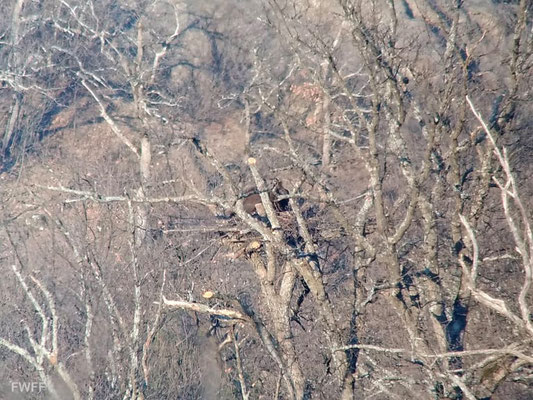
A reintroduced Cinereous Vulture pair successfully hatched a chick in Bulgaria’s wild! This excellent news comes after many years of targeted reintroduction efforts and trans-border collaboration fuelled by a common purpose to bring large vultures back to the Balkan country.
Large vulture restoration efforts in Bulgaria
Local conservationists have been striving to restore large vulture species in Bulgaria for decades now, together with the support of international organizations. The first step was reintroducing the Griffon Vulture in the Kresna Gorge and Stara Planina mountain range in Bulgaria, which was achieved after the release of over 350 Griffon Vultures there, donated by Spain, France and more than 19 zoos in seven countries. To achieve the second step, which is the return of the Cinereous Vulture as a nesting species, the Vultures Back to LIFE project funded by the European Commission’s LIFE programme and led by the Green Balkans and Fund for Wild Flora and Fauna started in 2015. The first three Cinereous Vultures — all captive-bred — were reintroduced in 2018, and 2019 saw the release of the first birds from Spain – all originating from wildlife rehabilitation centres.

Fast-forward 6 years, and already 59 Cinereous Vultures, most coming from Spain, reached Bulgaria thanks to the joint efforts of Junta de Extremadura, AMUS and the Vulture Conservation Foundation (VCF). And in early 2021, the project team observed the first signs of breeding.
Cinereous Vulture chick hatches in Bulgaria’s wild
As a result of all these targeted conservation actions, a total of three Cinereous Vulture pairs, two in the Eastern Stara Planina (Kotel) and one in Vratsa Balkans, have established themselves and were showing the first signs of breeding behaviour, building nests and copulating this year. By the end of March, it was official that the species was nesting again in the country since the pairs in Kotel laid eggs and began incubating.
This achievement was a turning point for the recovery of the species and we were hopeful. It meant that the species accepted the Stara Planina range as their home and that successful breeding would follow shortly, even if it was not in 2021. So, when we learned that Balkan and Kamchya, birds originating from Spain, welcomed a chick in Bulgaria, it was truly a fantastic feeling, and an important milestone for the country, the Balkan Peninsula and beyond. You see, this is the first Cinereous Vulture hatching in Stara Planina in 60-70 years and the first in Bulgaria in nearly three decades — 28 years to be precise. The establishment of a Cinereous Vulture breeding population in Bulgaria is also very significant for the Balkans, as this nucleus now becomes the second breeding population in the Balkans after the one in Dadia National Park in Greece,— all thanks to the wonderful partnership of the Vultures Back to LIFE project and the endless effort of several nature conservation organizations working intensively on vulture conservation during the last 30 years.
“This is a significant result, only 3 years after the first birds were reintroduced in Bulgaria – and gives us hope that the nucleus will grow solidly and sustainably in the next few years”, says José Tavares, Director of the VCF.
“I remember a regional meeting in 2003 organized within the Balkan Vulture Action Plan, where we talked about Cinereous Vulture reintroduction as a dream,” states Jovan Andevski, Programmes Manager at the VCF. “Everybody was aware that this is a long term goal, there was a lot of work to be done, but most of us did not dare to expect to witness this result, yet it became a reality and it deserves a big celebration!”
Now that the Cinereous Vulture is back, our next goal is to return the magnificent Bearded Vulture to Bulgaria.
Thank you to everyone that contributed to vulture conservation in Bulgaria, and a special thank you to Spain. Without the endless efforts of many people (and the birds, of course), this outcome wouldn’t be possible.
Vultures Back to LIFE

Led by the wildlife conservation charity Green Balkans in collaboration with the Fund for Wild Flora and Fauna, Vulture Conservation Foundation, Junta de Extremadura and Euronatur, the Vultures Back to LIFE project aims to reintroduce the Cinereous or Eurasian Black Vulture to Bulgaria. The team will transfer and release around 60 birds, some from captive-breeding, but mostly coming from Spanish wildlife rehabilitation centres into the wild in Bulgaria as well as creating supplementary feeding stations and improving populations of wild herbivores, improving the nesting conditions and creating artificial nest sites and tackling some of the major threats to vultures in the country such as insulating electricity pylons and illegal use of poison in nature.






